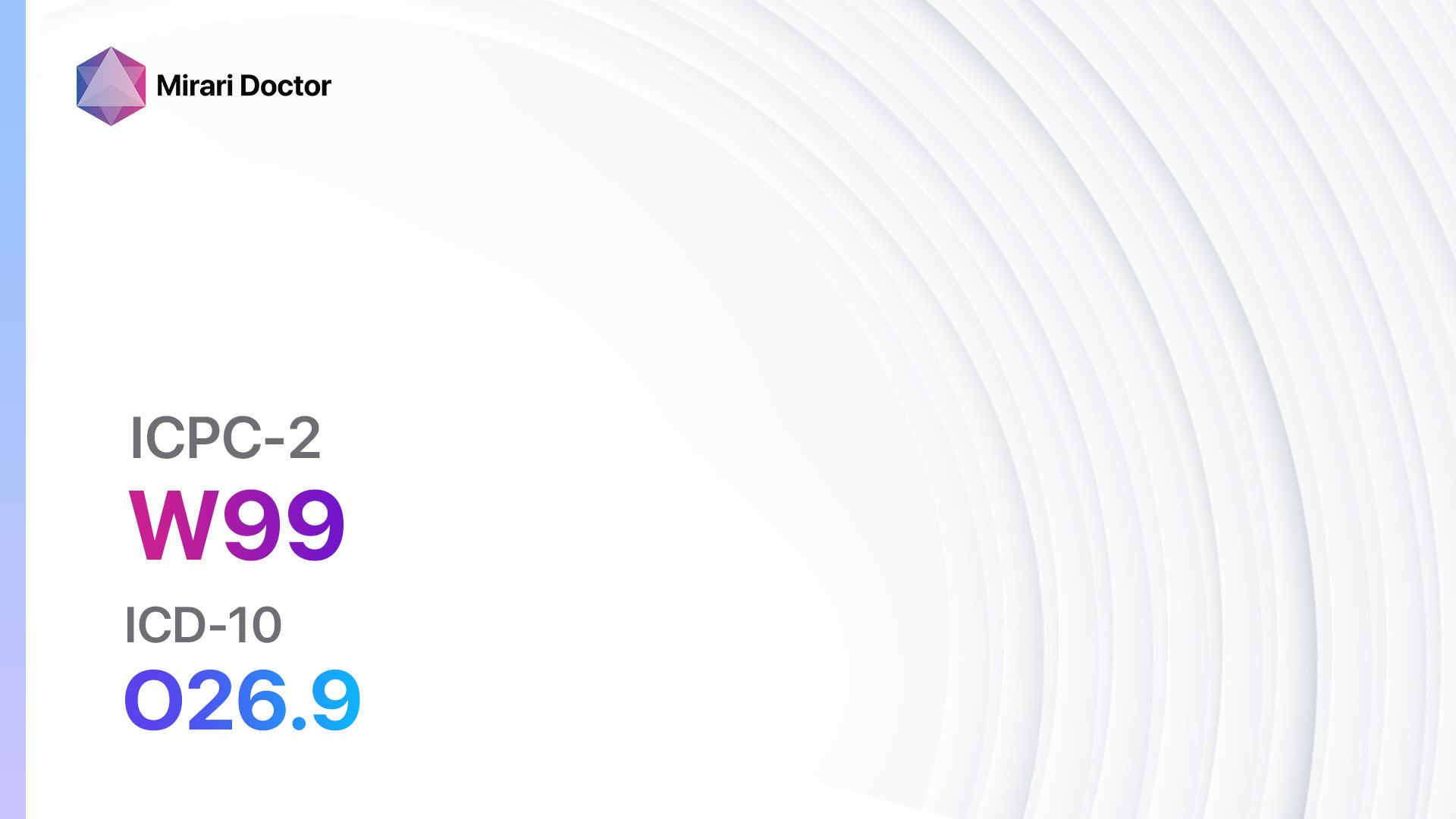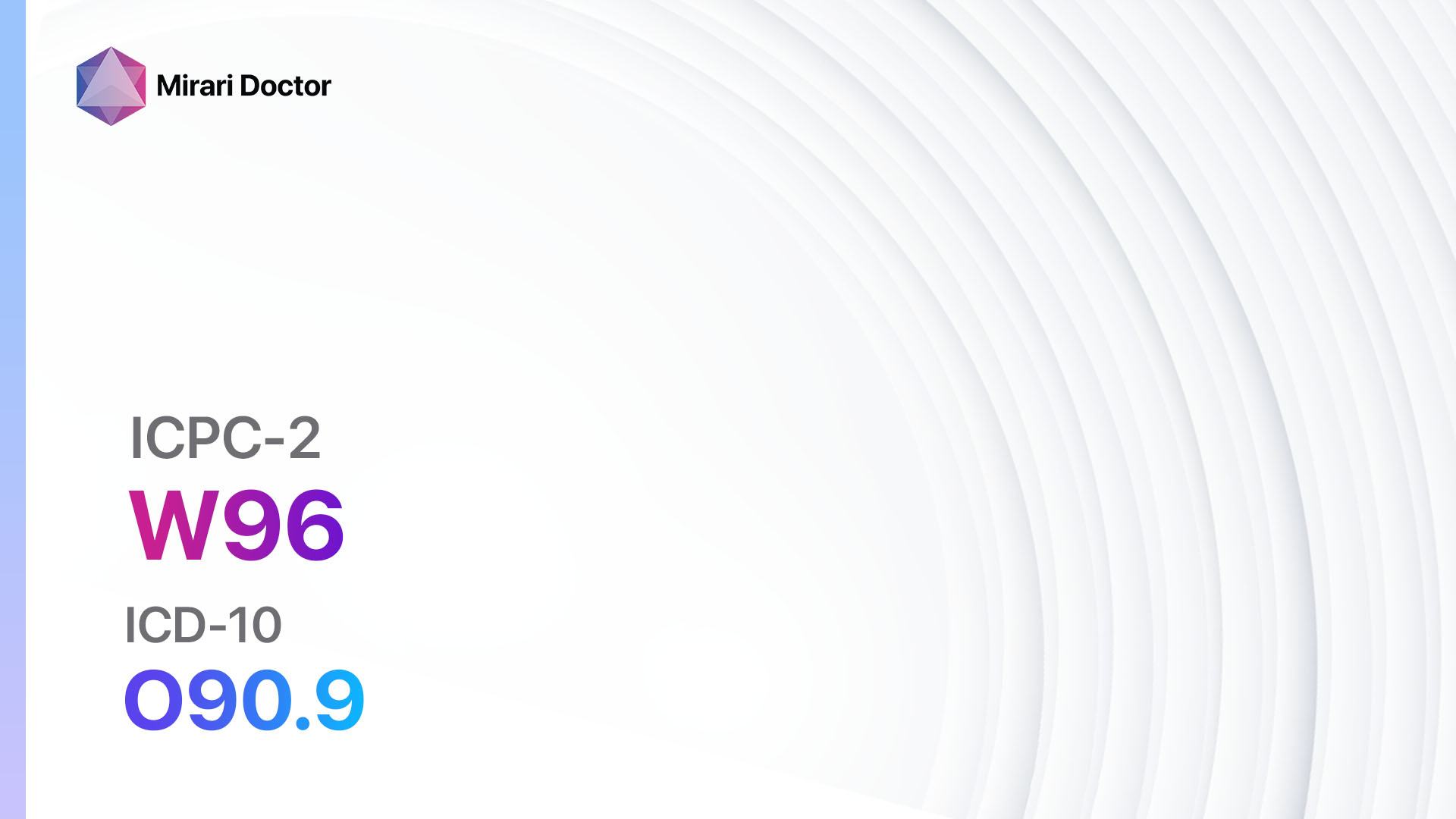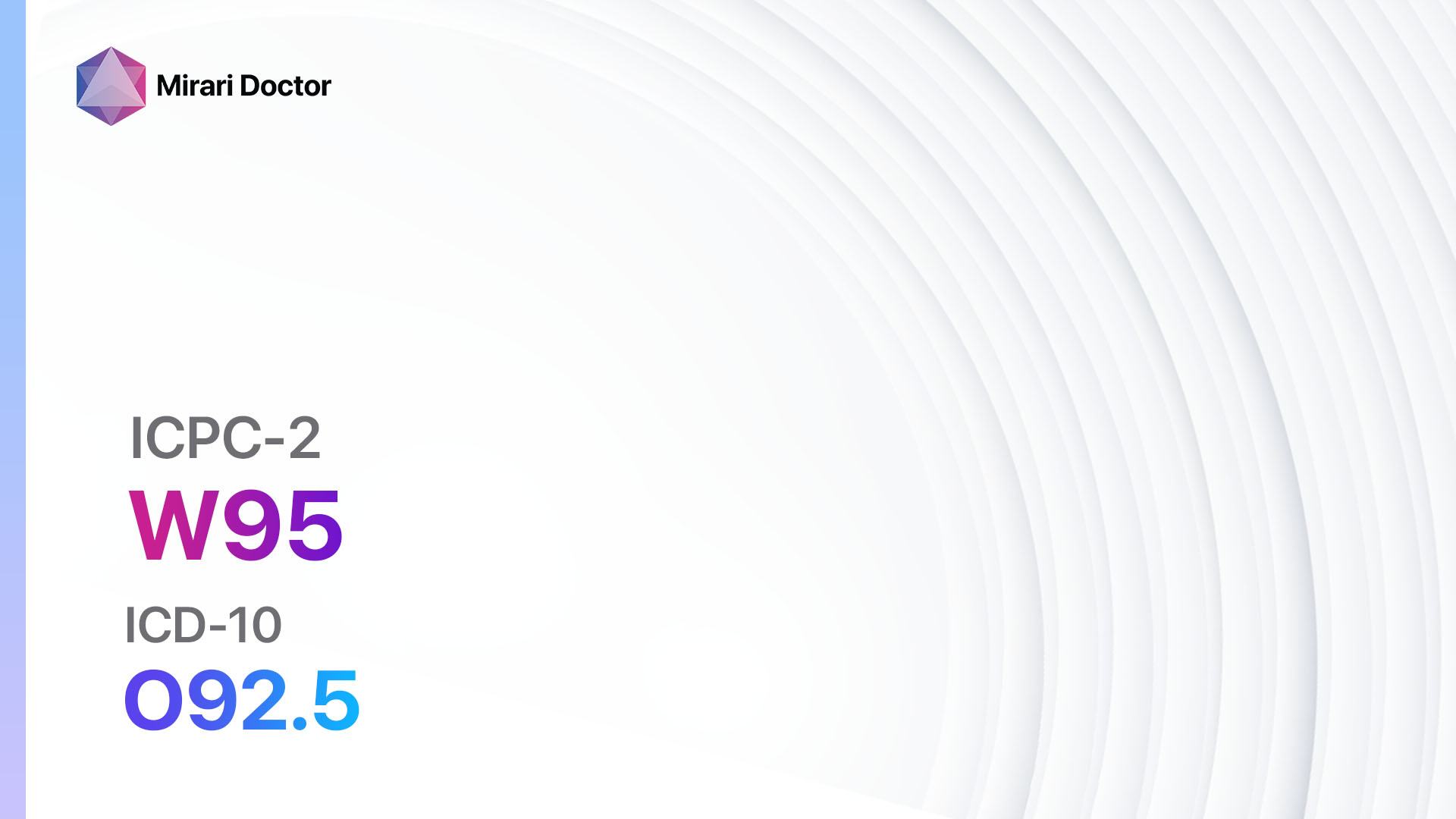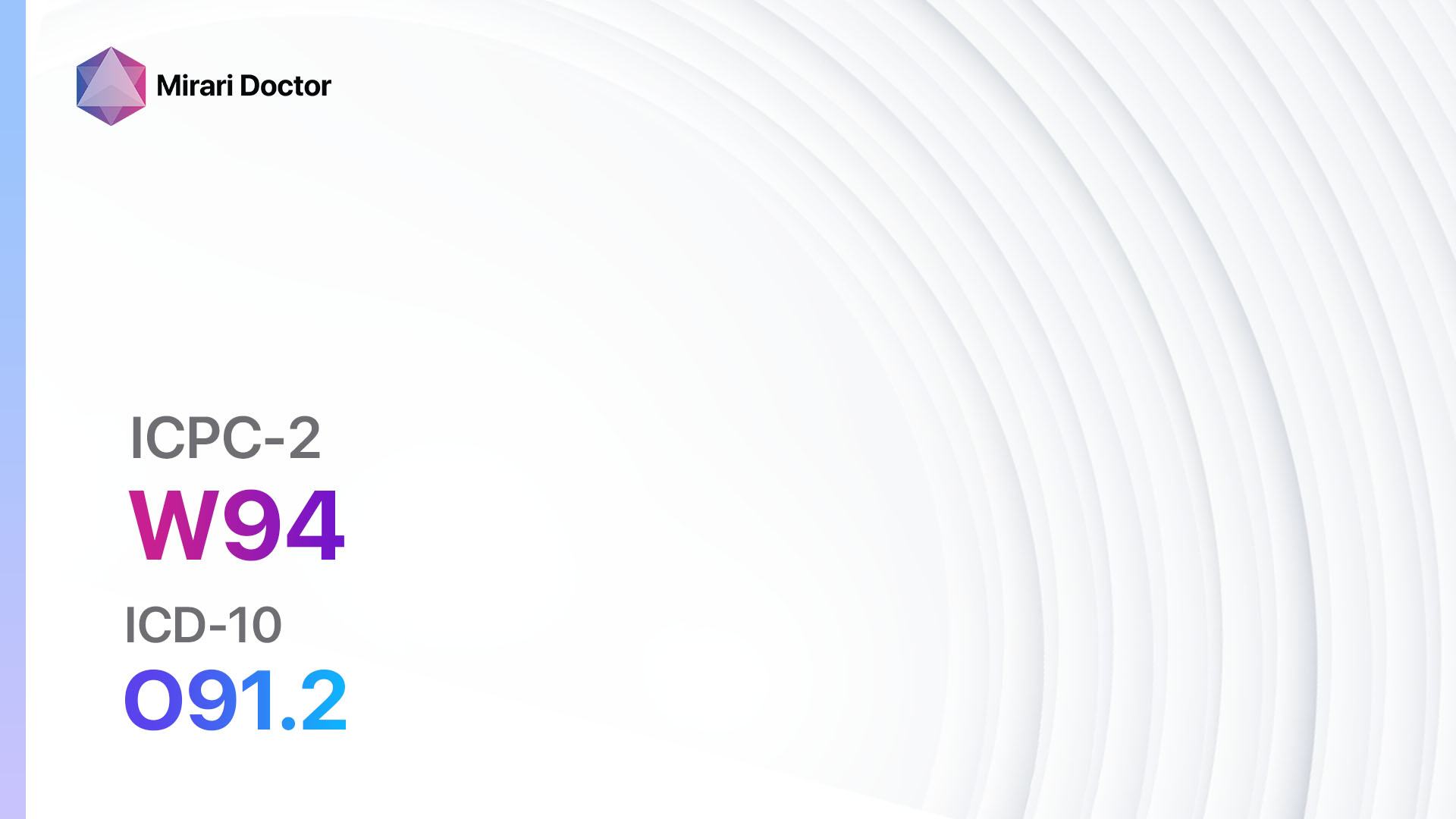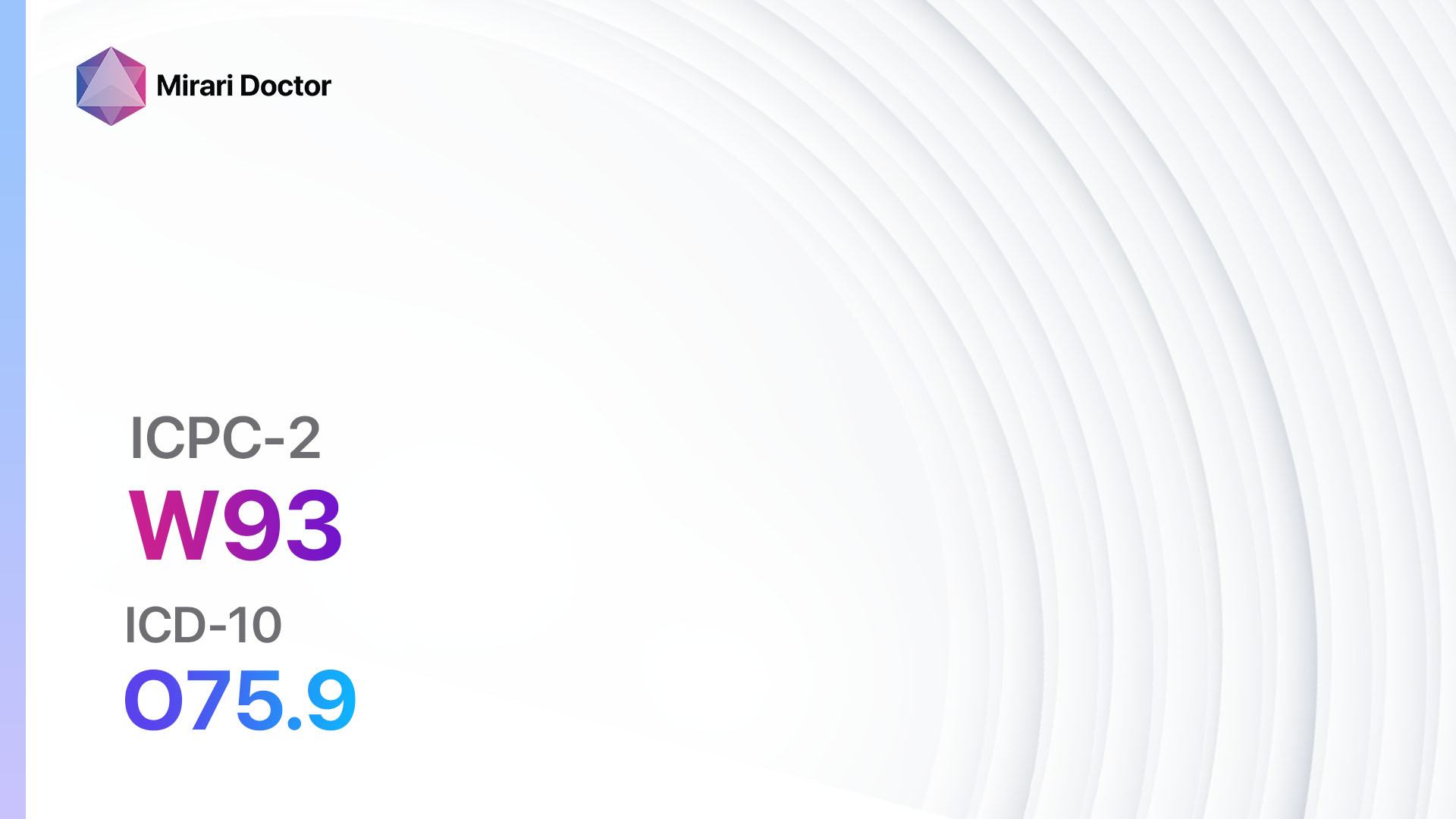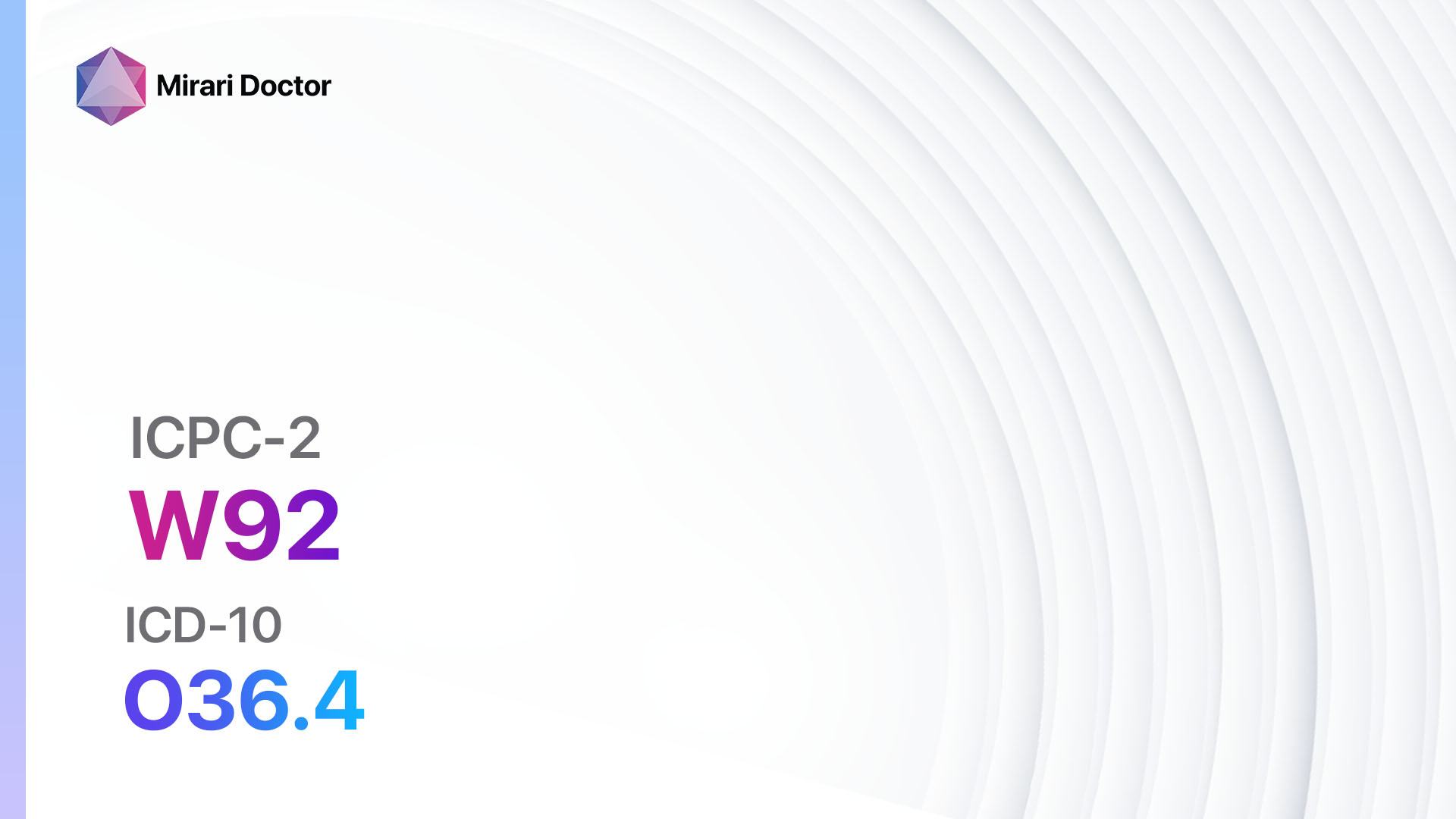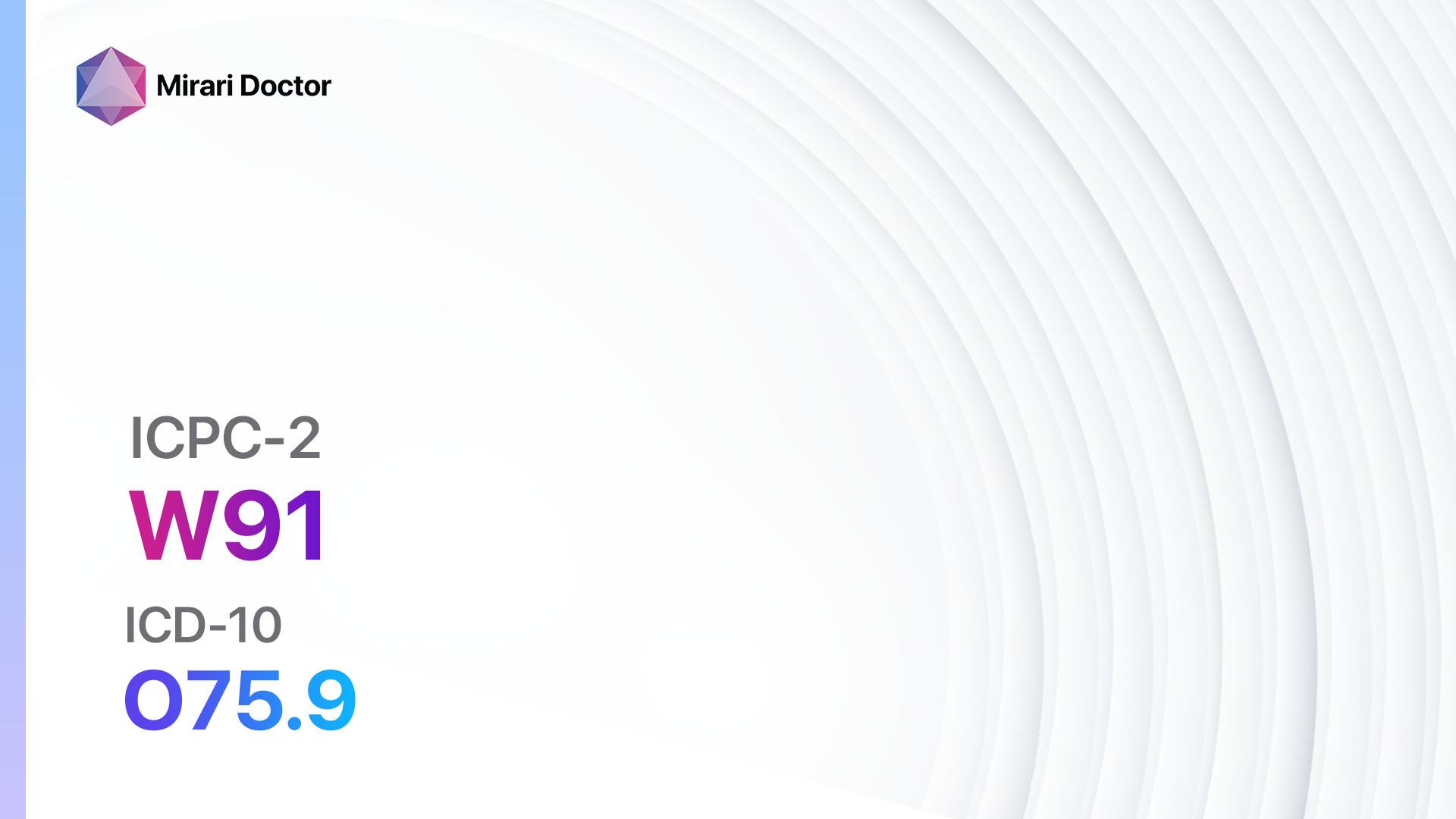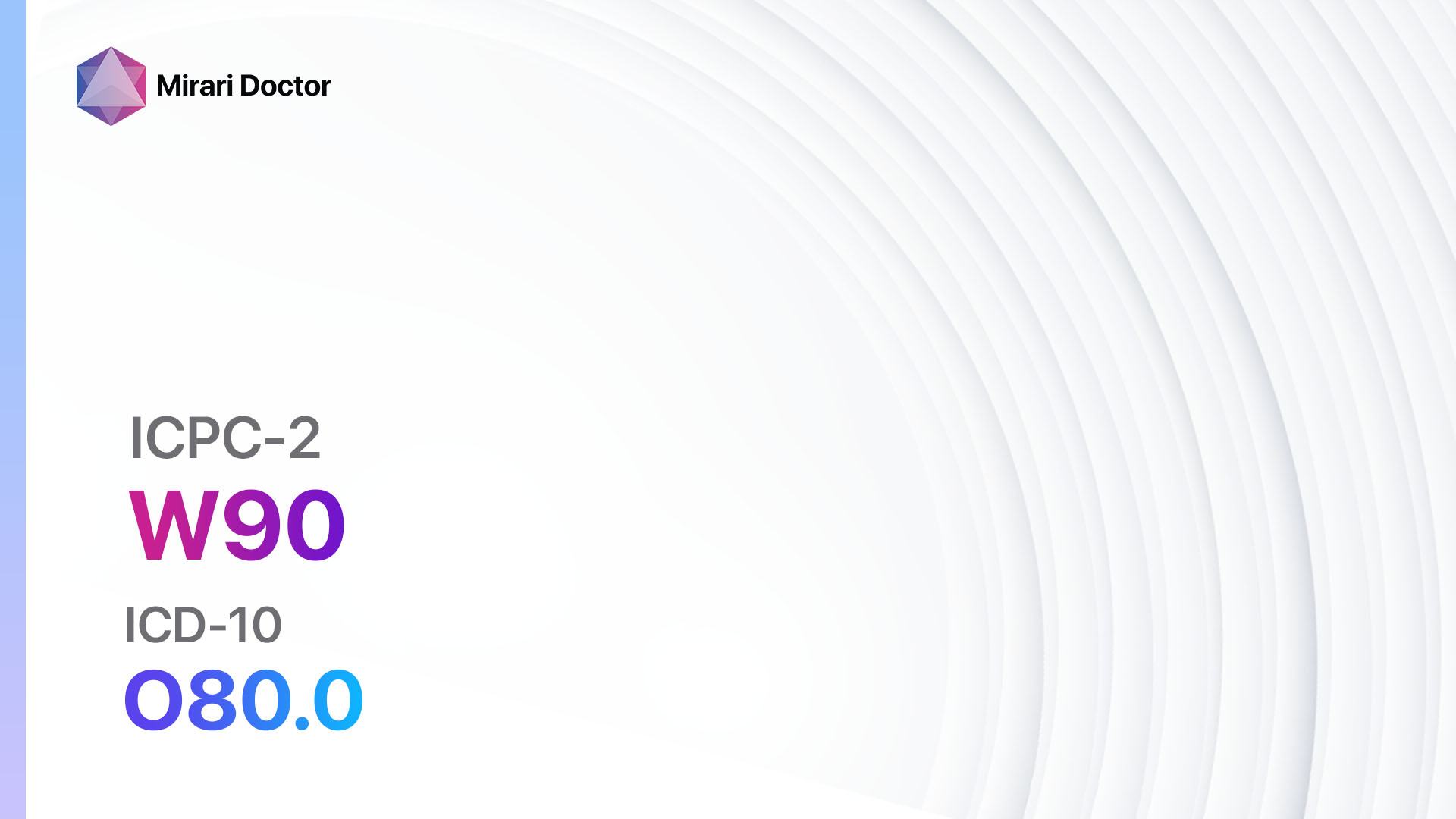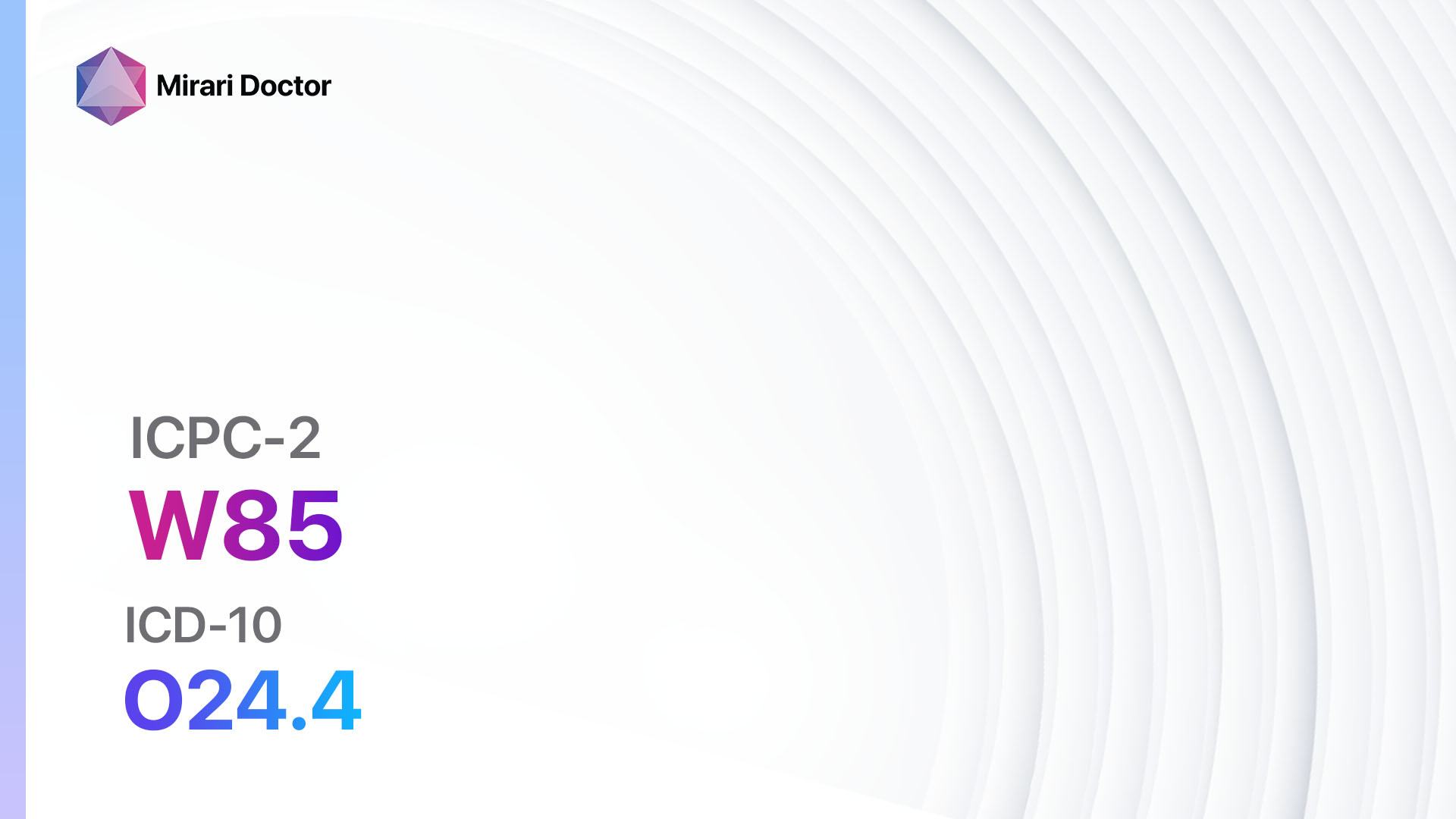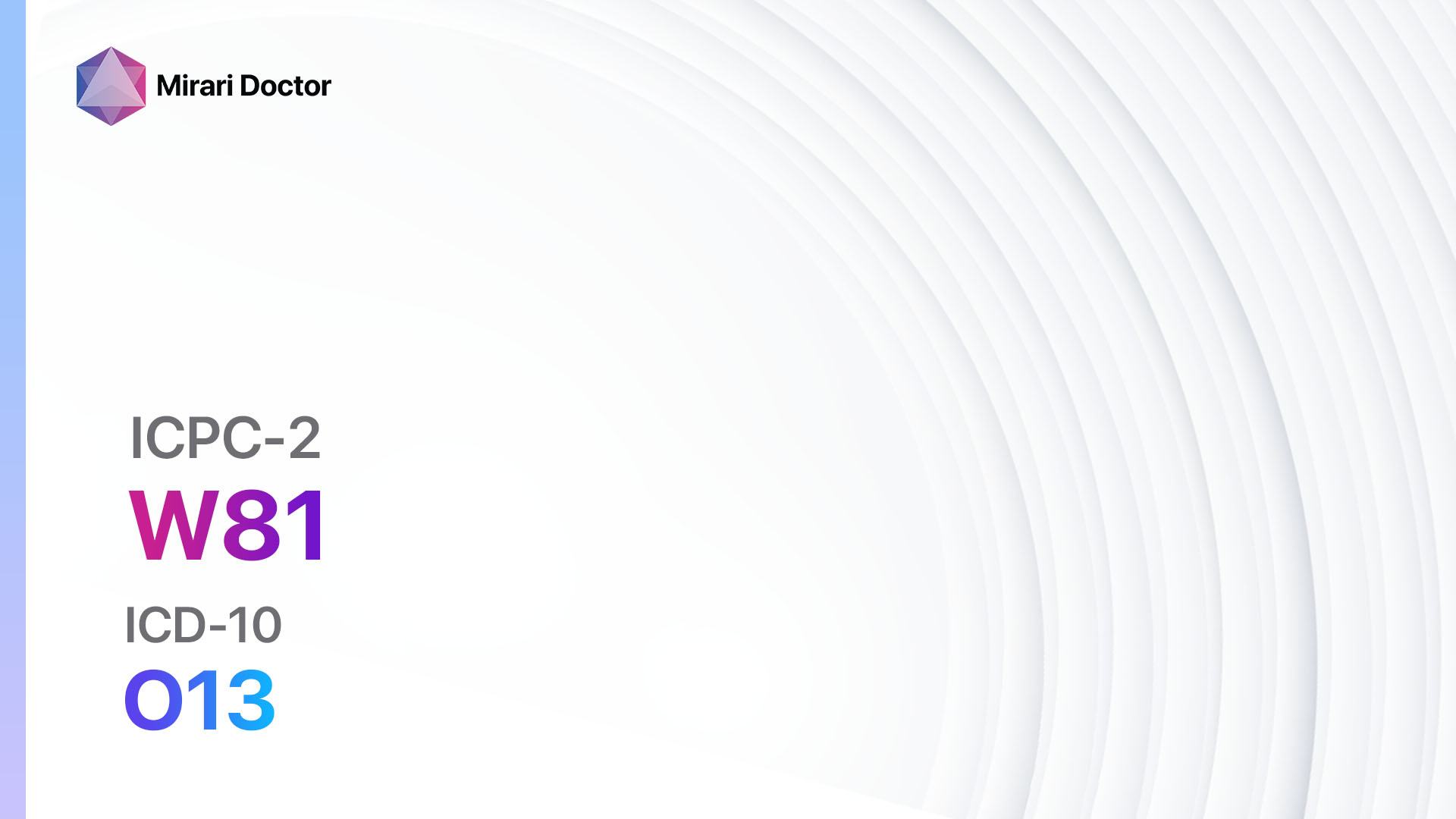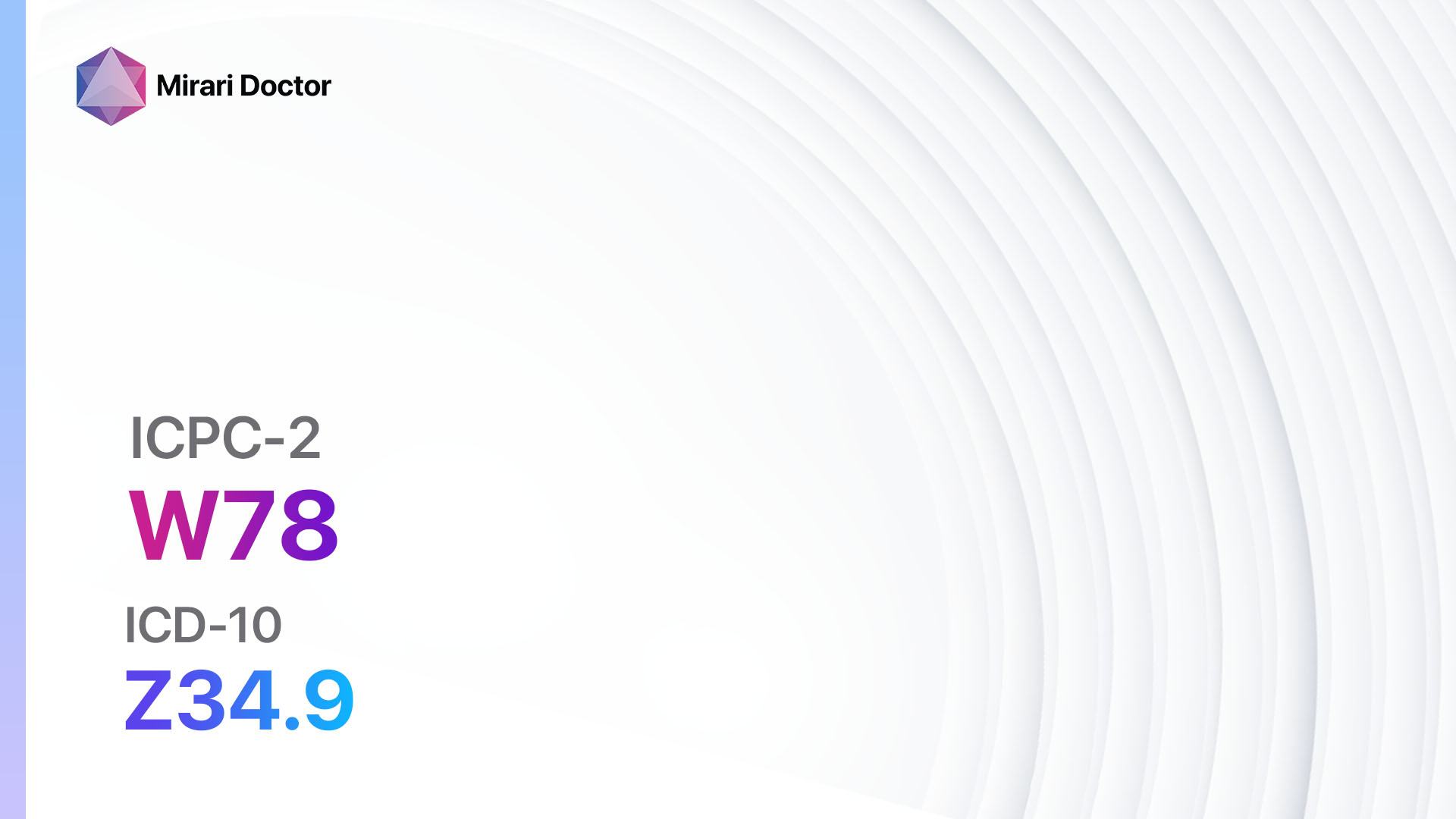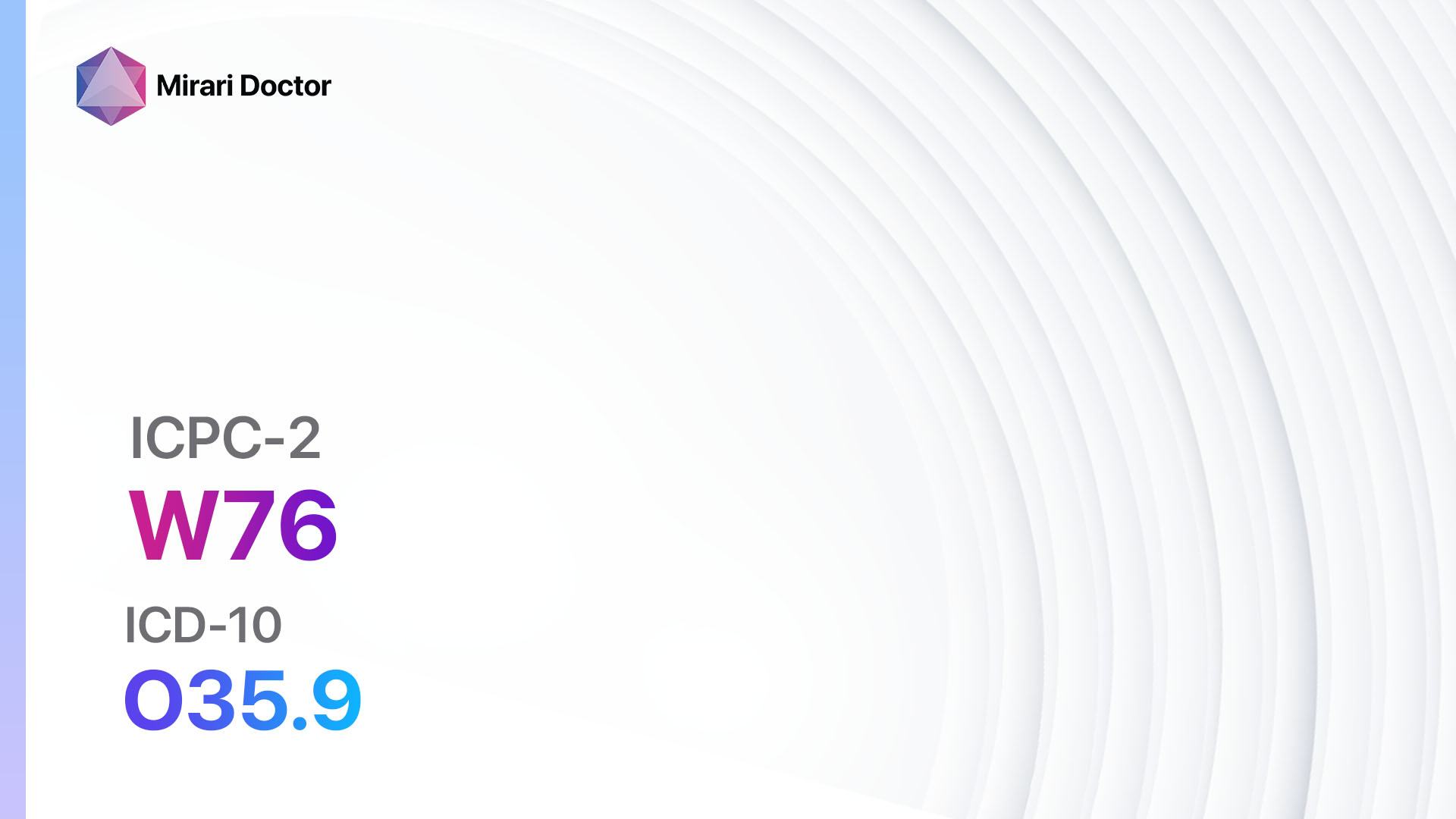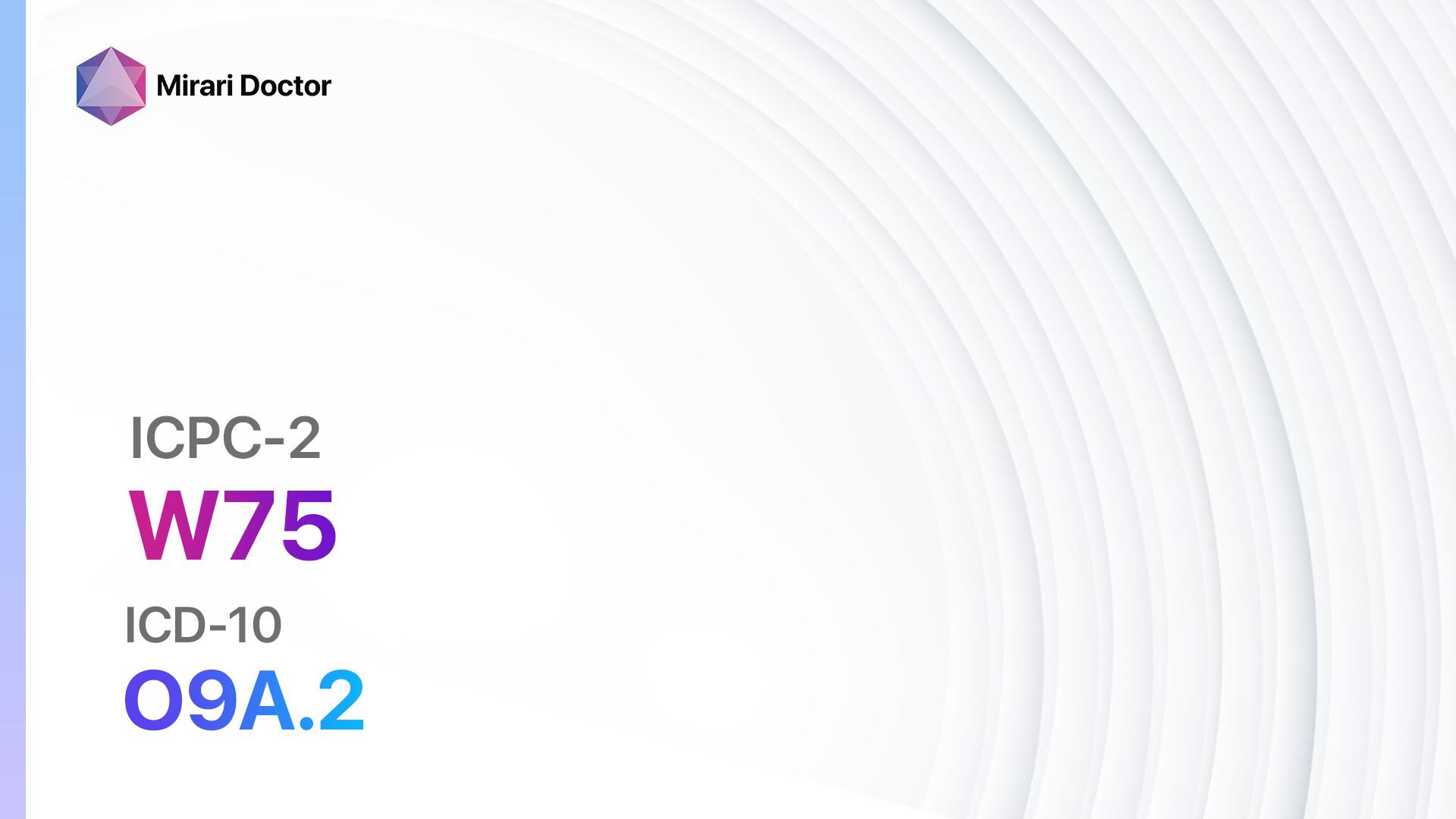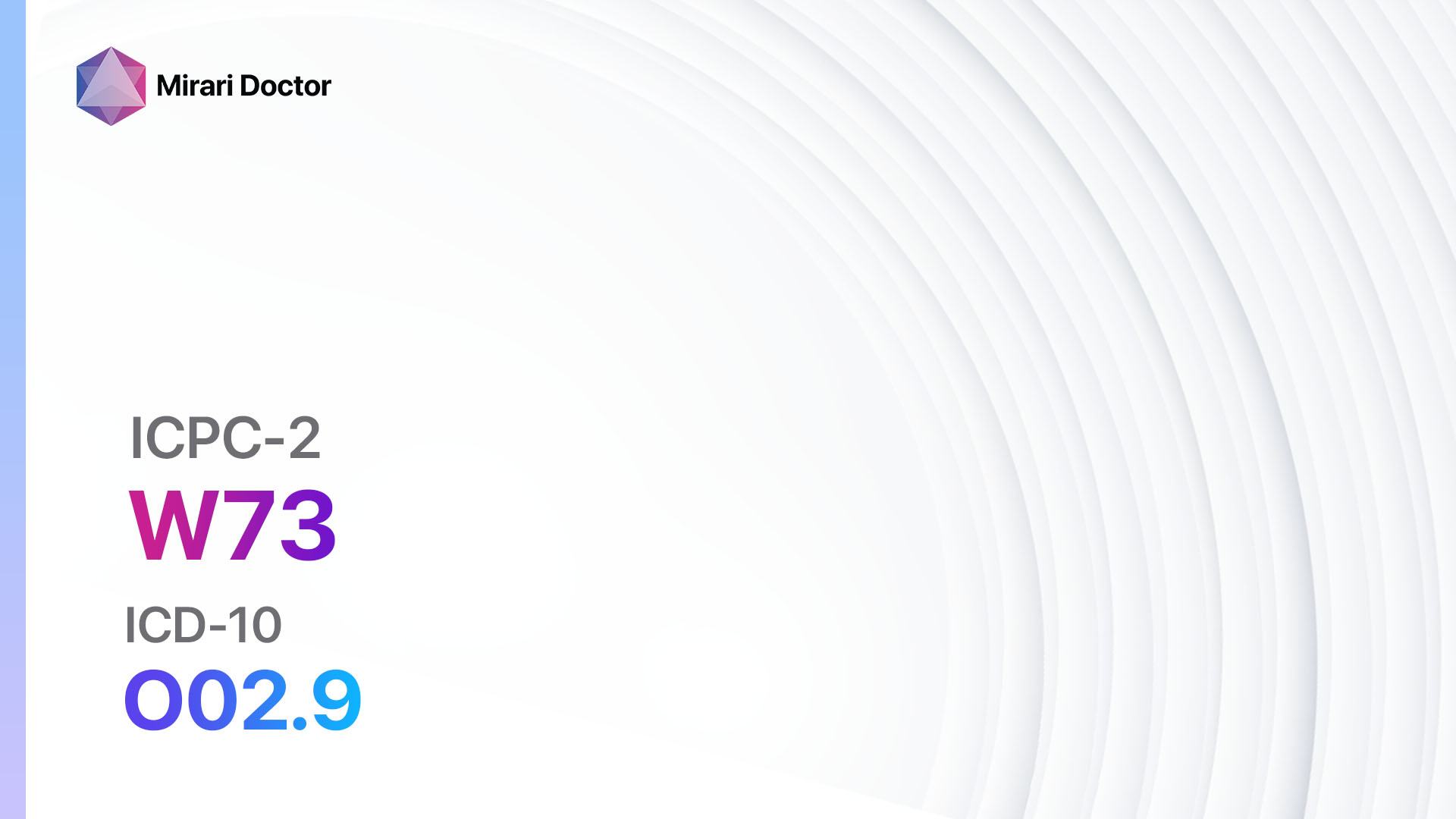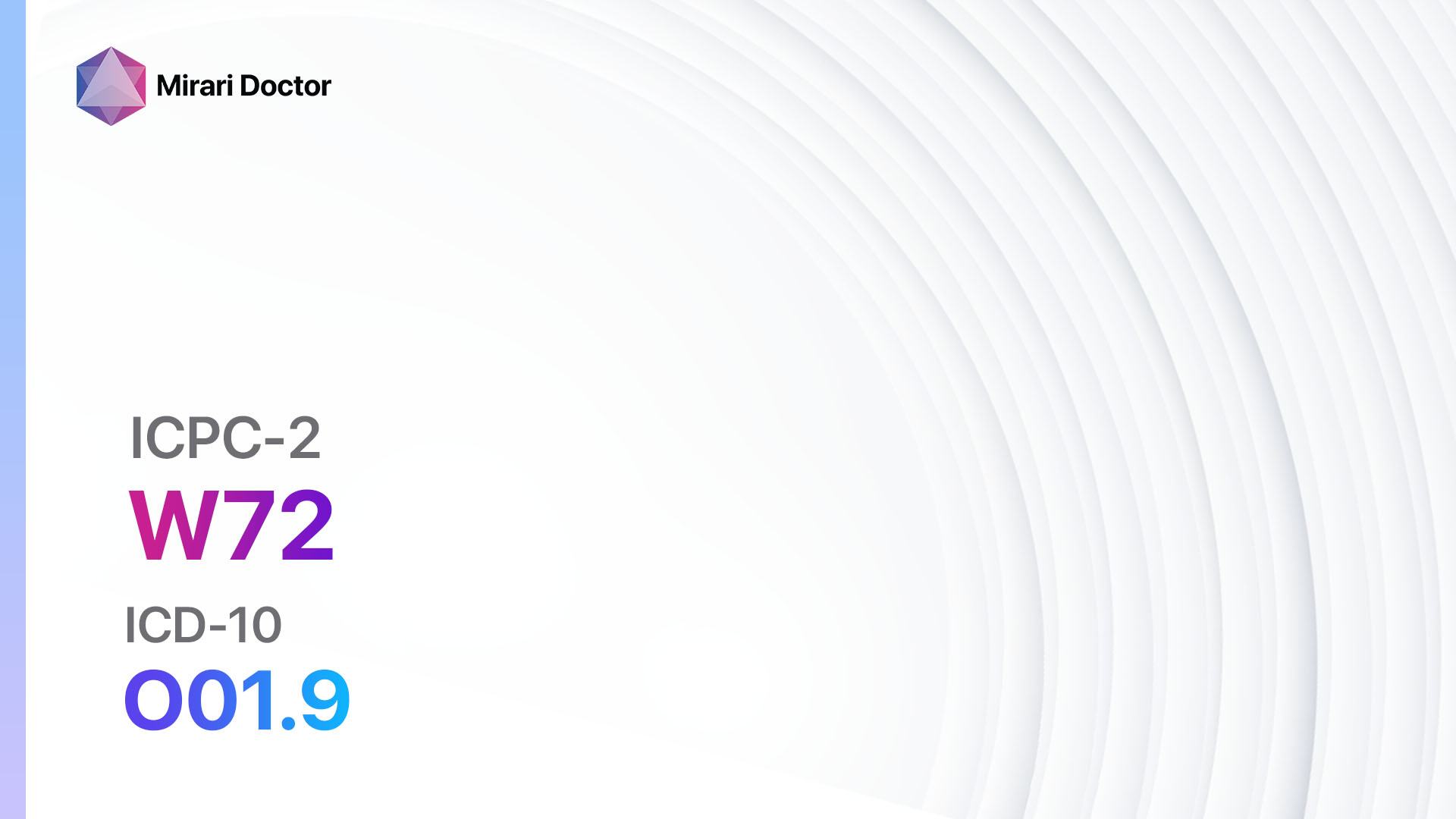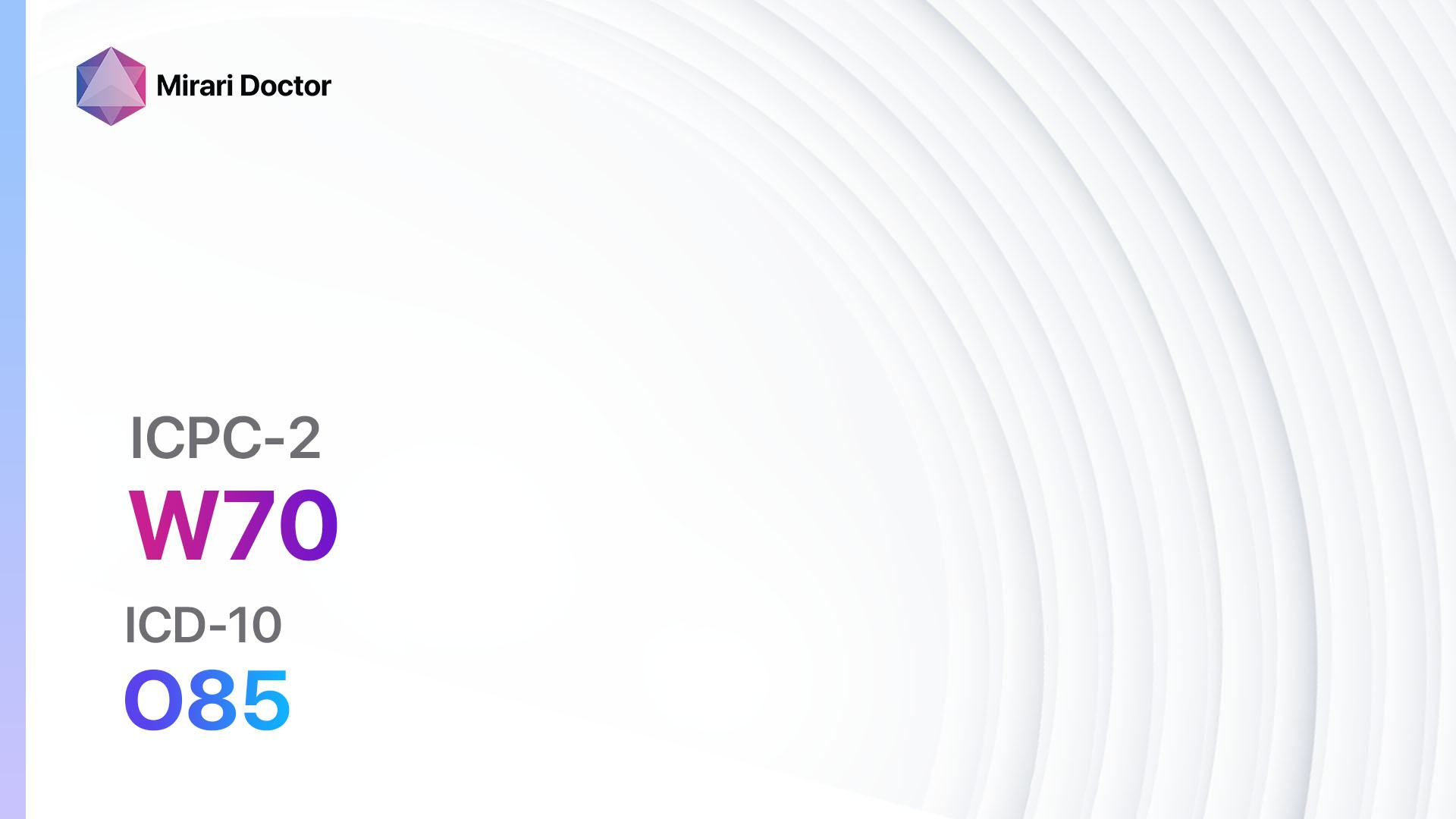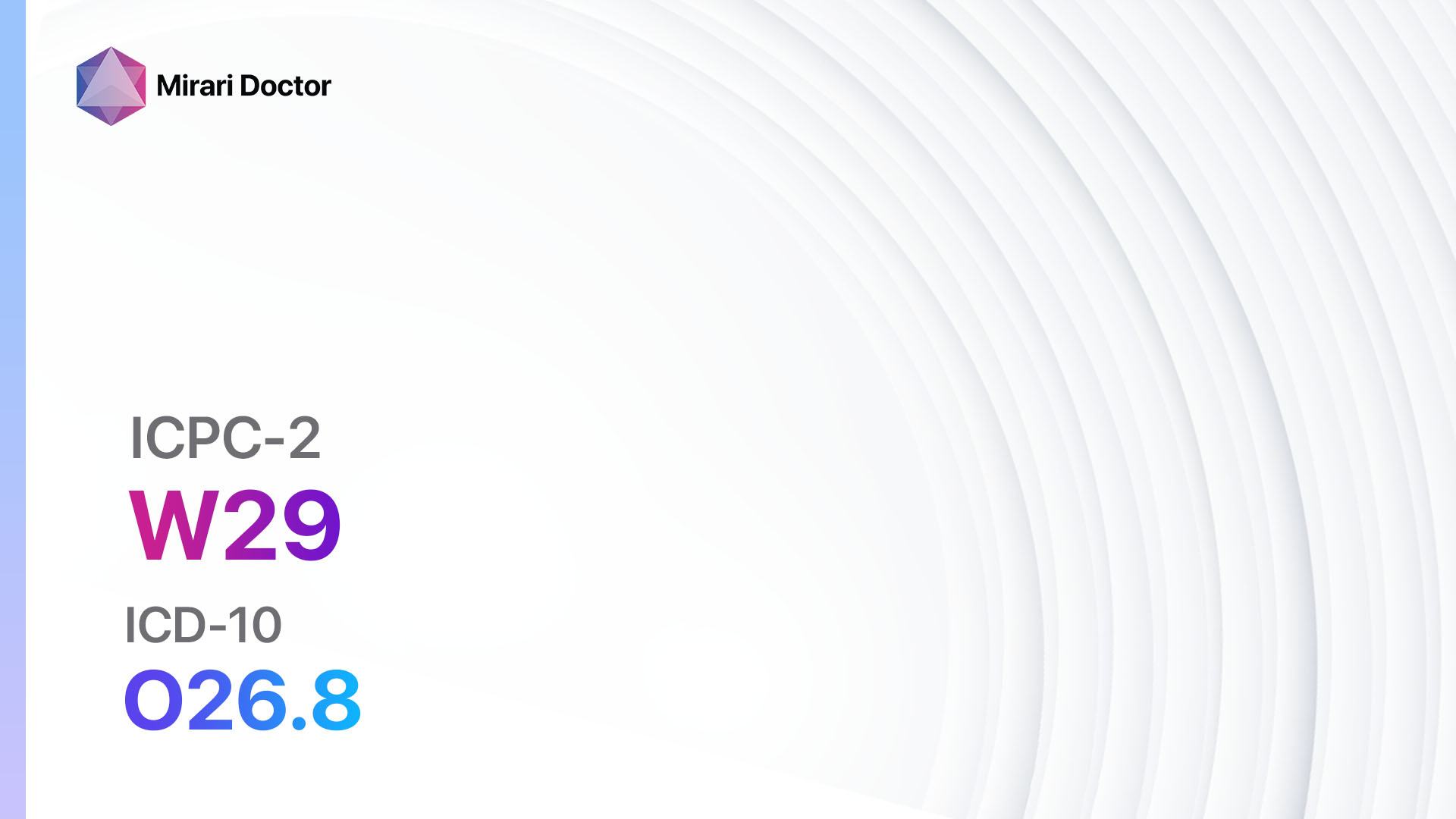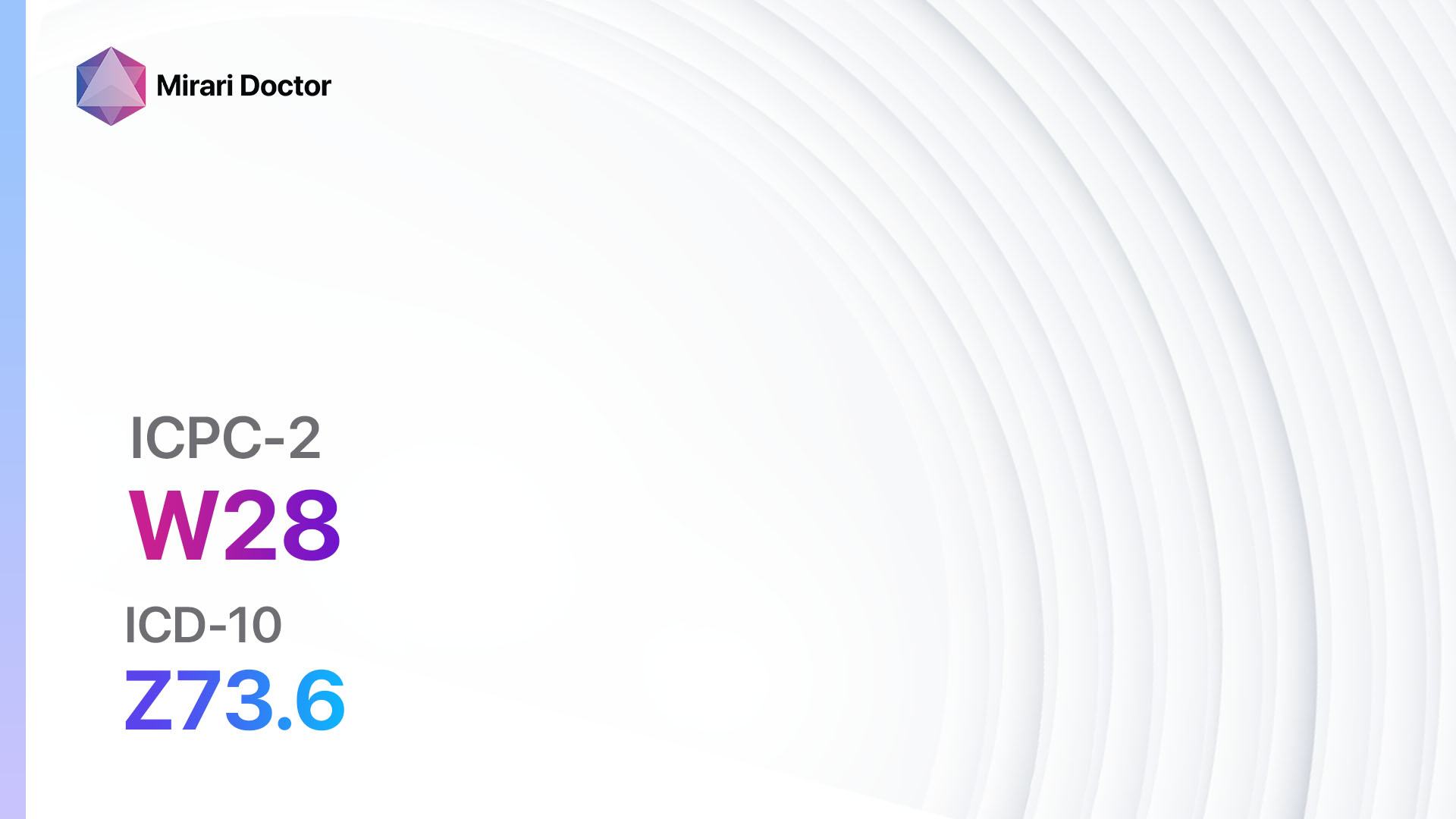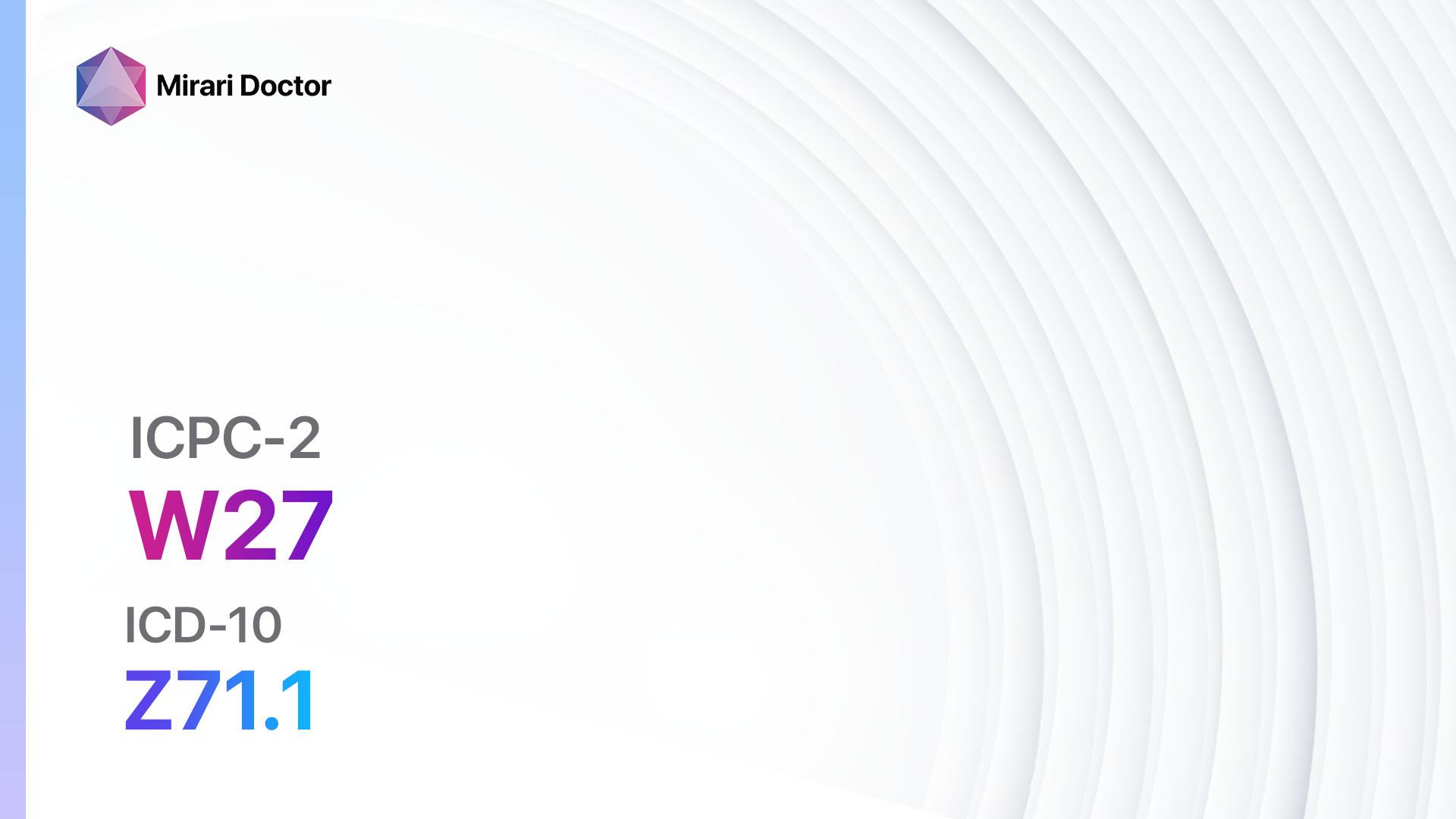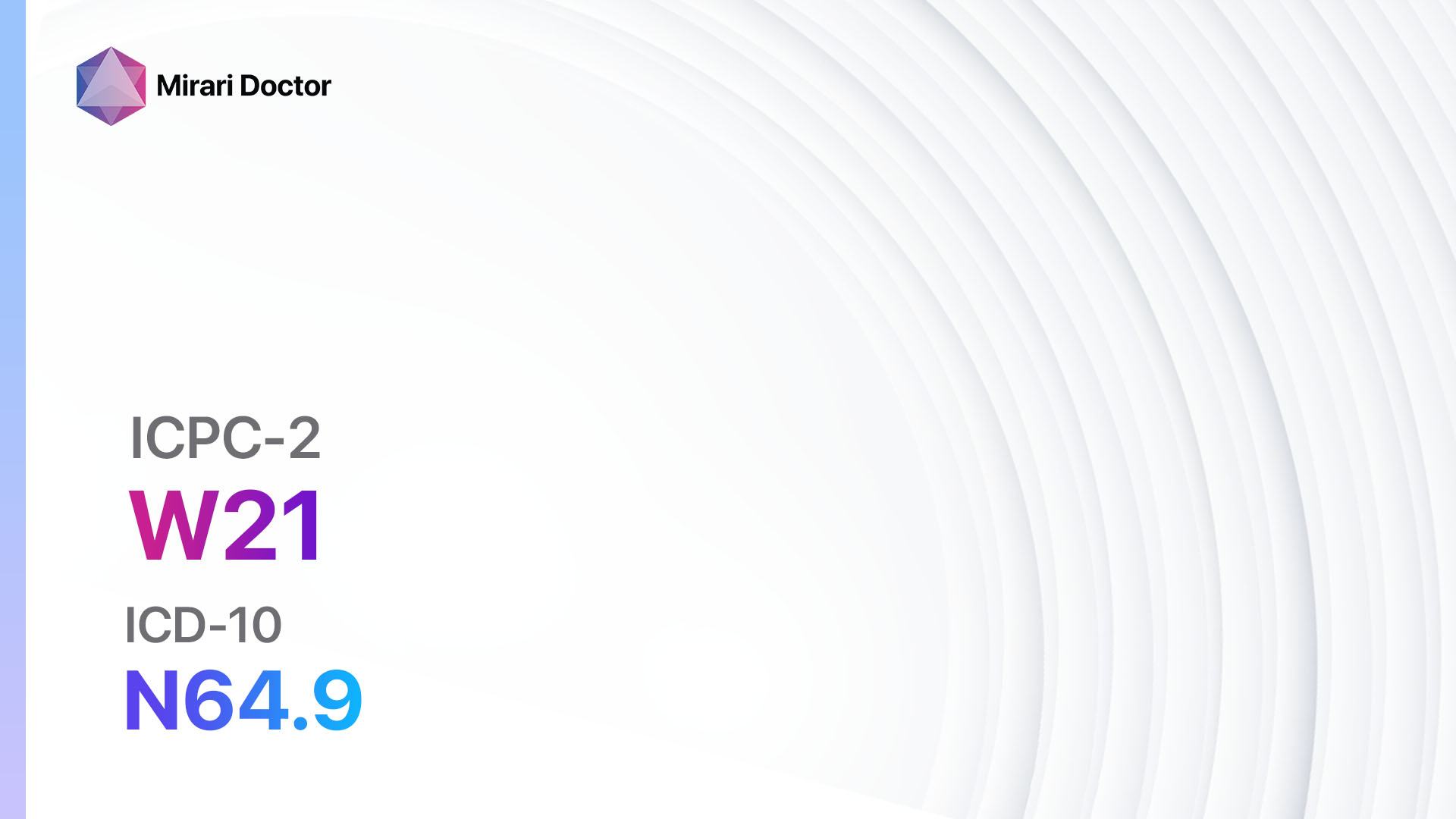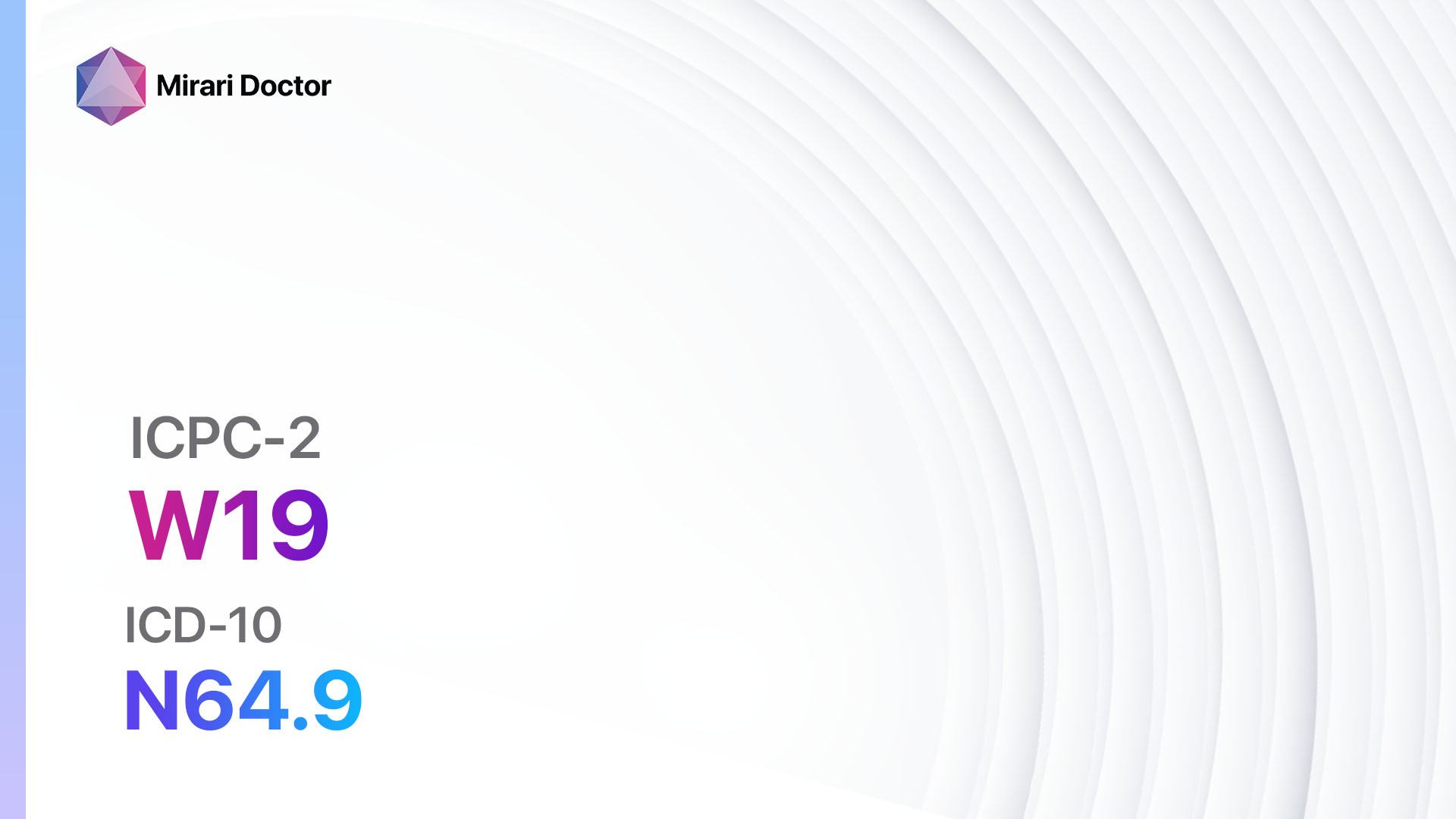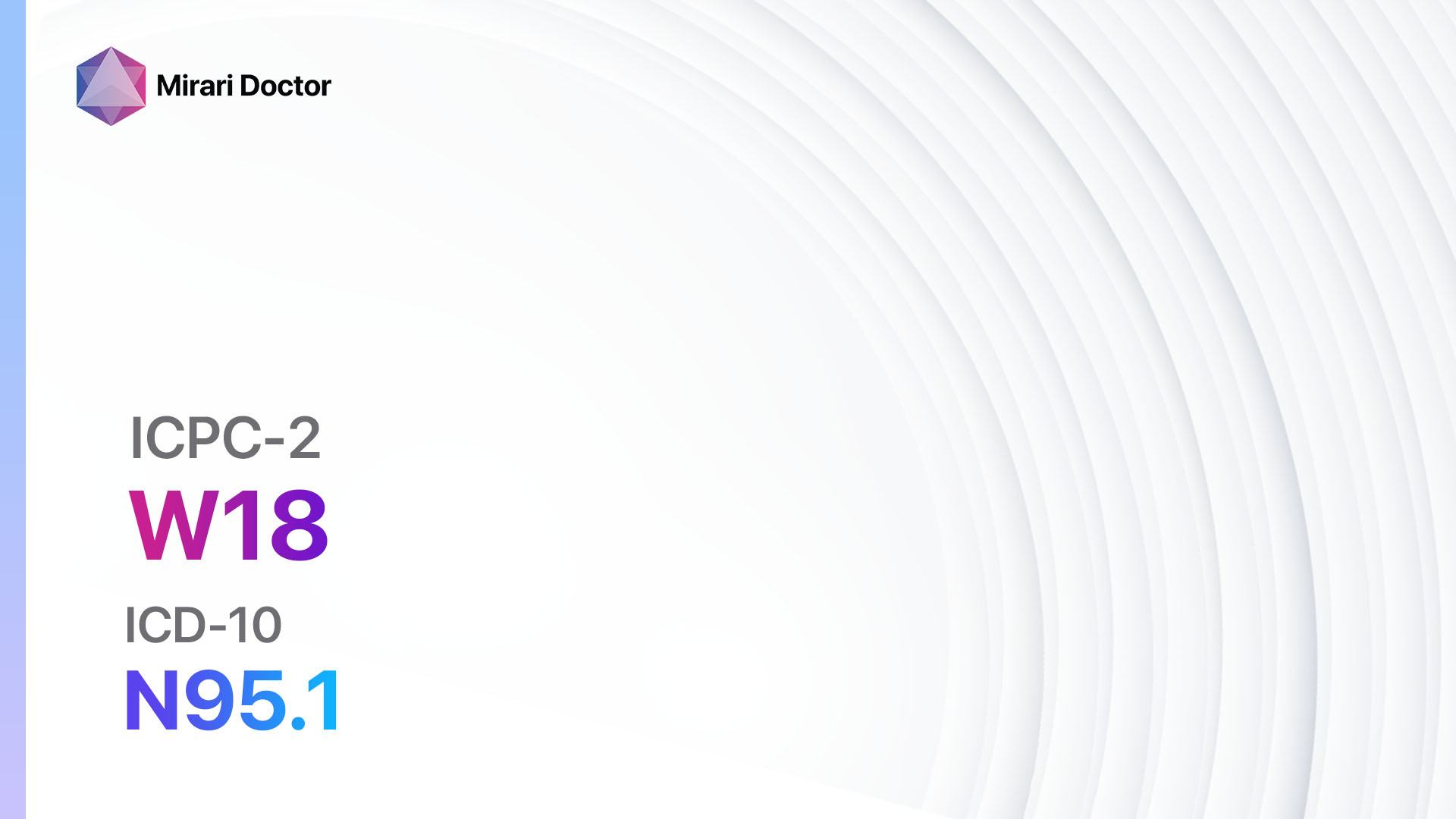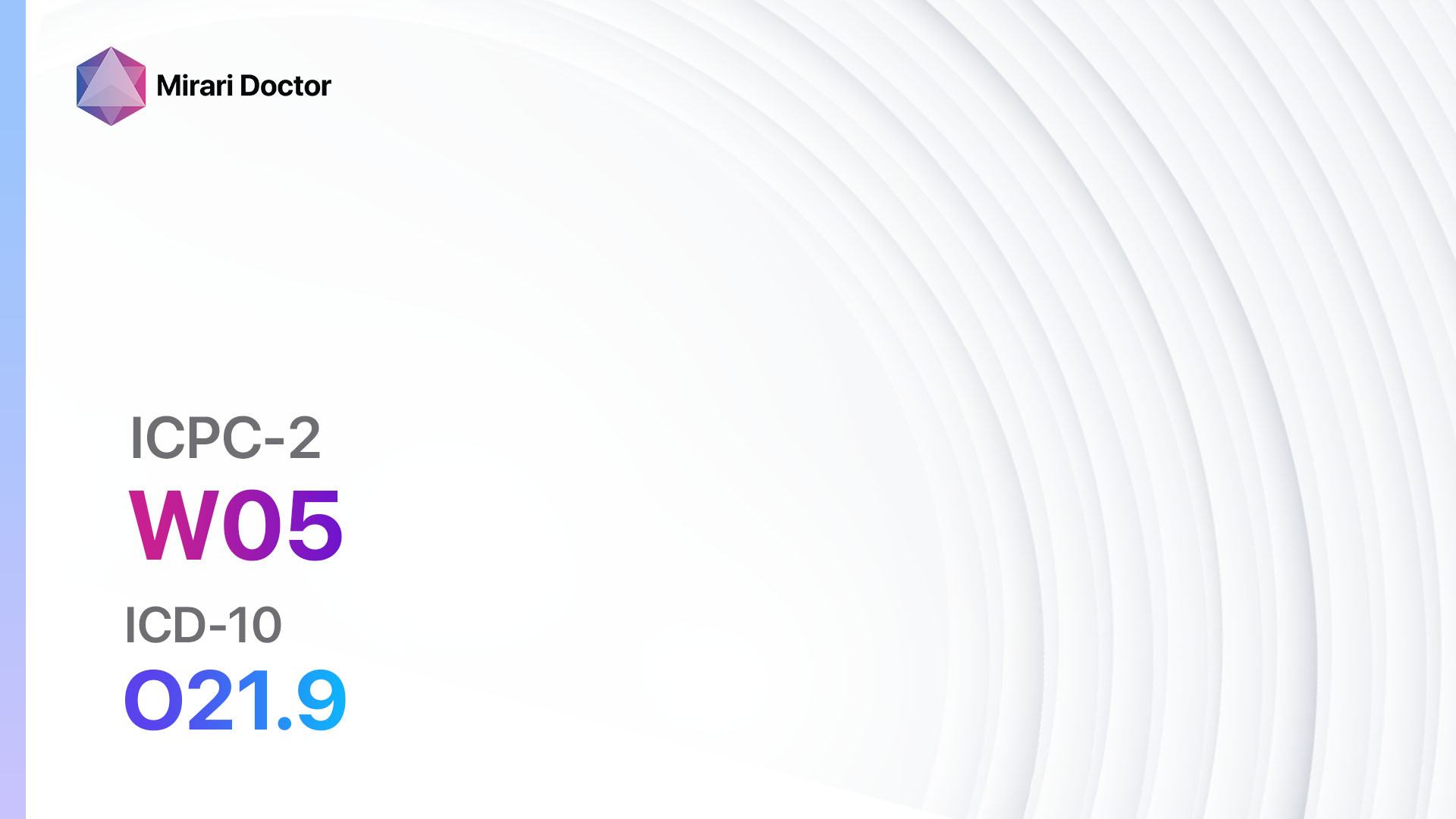
Introduction
Pregnancy vomiting/nausea, also known as morning sickness, is a common condition experienced by pregnant women. It is characterized by feelings of nausea and vomiting, typically occurring during the first trimester of pregnancy[1]. While morning sickness is generally considered a normal part of pregnancy, it can cause discomfort and affect the quality of life for some women[2]. The aim of this guide is to provide healthcare professionals with a comprehensive overview of the symptoms, causes, diagnostic steps, possible interventions, and patient education related to pregnancy vomiting/nausea.
Codes
- ICPC-2 Code: W05 Pregnancy vomiting/nausea
- ICD-10 Code: O21.9 Vomiting complicating pregnancy, unspecified
Symptoms
- Nausea: A feeling of queasiness or an urge to vomit.
- Vomiting: The act of forcefully expelling the contents of the stomach through the mouth[3].
Causes
- Hormonal changes: Fluctuations in hormone levels, particularly human chorionic gonadotropin (hCG) and estrogen, can contribute to pregnancy vomiting/nausea[4].
- Increased sensitivity to smells and tastes: Pregnant women may experience heightened sensitivity to certain odors and flavors, which can trigger nausea and vomiting[5].
Diagnostic Steps
Medical History
- Gather information about the patient’s pregnancy, including gestational age and any previous pregnancies.
- Assess the severity and frequency of nausea and vomiting episodes.
- Inquire about any associated symptoms, such as food aversions or cravings.
- Identify any potential risk factors, such as a history of motion sickness or a family history of pregnancy vomiting/nausea[6].
Physical Examination
- Perform a general physical examination to assess the overall health of the patient.
- Check for signs of dehydration, such as dry mouth, decreased skin turgor, and low urine output.
- Evaluate the patient’s weight to monitor for excessive weight loss[7].
Laboratory Tests
- Blood tests: Measure levels of hCG and other hormones to assess their role in pregnancy vomiting/nausea.
- Urine tests: Check for ketones, which may indicate dehydration and inadequate caloric intake[8].
Diagnostic Imaging
- Diagnostic imaging is typically not necessary for the diagnosis of pregnancy vomiting/nausea[9].
Other Tests
- In some cases, additional tests may be performed to rule out other potential causes of nausea and vomiting, such as gastrointestinal disorders or infections[10].
Follow-up and Patient Education
- Schedule regular follow-up appointments to monitor the patient’s symptoms and overall well-being.
- Provide education on self-care measures, such as dietary modifications and lifestyle changes, to alleviate symptoms.
- Offer emotional support and reassurance to the patient, as pregnancy vomiting/nausea is usually a temporary condition.
Possible Interventions
Traditional Interventions
Medications:
Top 5 drugs for Pregnancy vomiting/nausea:
- Pyridoxine (Vitamin B6):
- Cost: $5-$15 for a month’s supply.
- Contraindications: Hypersensitivity to pyridoxine.
- Side effects: Nausea, headache.
- Severe side effects: None reported.
- Drug interactions: None reported.
- Warning: None.
- Doxylamine succinate:
- Cost: $10-$20 for a month’s supply.
- Contraindications: Hypersensitivity to doxylamine succinate.
- Side effects: Drowsiness, dry mouth.
- Severe side effects: None reported.
- Drug interactions: None reported.
- Warning: None.
- Ondansetron:
- Cost: $20-$50 for a month’s supply.
- Contraindications: Hypersensitivity to ondansetron.
- Side effects: Headache, constipation.
- Severe side effects: QT prolongation, serotonin syndrome.
- Drug interactions: Serotonergic drugs, QT-prolonging drugs.
- Warning: Use caution in patients with a history of cardiac arrhythmias.
- Metoclopramide:
- Cost: $10-$30 for a month’s supply.
- Contraindications: Gastrointestinal obstruction, pheochromocytoma.
- Side effects: Restlessness, drowsiness.
- Severe side effects: Tardive dyskinesia, neuroleptic malignant syndrome.
- Drug interactions: Dopamine antagonists, serotonergic drugs.
- Warning: Use caution in patients with a history of depression or Parkinson’s disease.
- Promethazine:
- Cost: $10-$30 for a month’s supply.
- Contraindications: Hypersensitivity to promethazine, children under 2 years old.
- Side effects: Drowsiness, dry mouth.
- Severe side effects: Respiratory depression, neuroleptic malignant syndrome.
- Drug interactions: CNS depressants, anticholinergic drugs.
- Warning: Use caution in patients with a history of asthma or respiratory depression.
Alternative Drugs:
- Ginger (supplements or ginger ale): May help alleviate nausea and vomiting. Cost: $5-$15 for a month’s supply.
- Acupressure wristbands: Apply pressure to specific points on the wrist to reduce nausea. Cost: $10-$20 per pair.
- Peppermint: May help soothe the stomach and reduce nausea. Cost: $5-$10 for a month’s supply.
- Lemon: The scent of lemon may help alleviate nausea. Cost: Varies depending on the form (e.g., essential oil, fresh lemon).
Surgical Procedures
- Surgical procedures are not typically indicated for the treatment of pregnancy vomiting/nausea.
Alternative Interventions
- Acupuncture: May help reduce nausea and improve overall well-being. Cost: $60-$120 per session.
- Hypnotherapy: Can help manage stress and reduce symptoms of nausea. Cost: $100-$200 per session.
- Aromatherapy: The use of essential oils, such as peppermint or lemon, may help alleviate nausea. Cost: $10-$30 for a bottle of essential oil.
- Mind-body techniques (e.g., meditation, relaxation exercises): Can help reduce stress and promote a sense of calm. Cost: Free or minimal cost.
Lifestyle Interventions
- Eat small, frequent meals to prevent an empty stomach.
- Avoid triggers, such as strong odors or certain foods, that may worsen nausea.
- Stay hydrated by drinking small amounts of fluids throughout the day.
- Get plenty of rest and prioritize self-care.
- Consider wearing loose-fitting clothing to minimize discomfort.
It is important to note that the cost ranges provided are approximate and may vary depending on the location and availability of the interventions.
Mirari Cold Plasma Alternative Intervention
Understanding Mirari Cold Plasma
- Safe and Non-Invasive Treatment: Mirari Cold Plasma is a safe and non-invasive treatment option for various skin conditions. It does not require incisions, minimizing the risk of scarring, bleeding, or tissue damage.
- Efficient Extraction of Foreign Bodies: Mirari Cold Plasma facilitates the removal of foreign bodies from the skin by degrading and dissociating organic matter, allowing easier access and extraction.
- Pain Reduction and Comfort: Mirari Cold Plasma has a local analgesic effect, providing pain relief during the treatment, making it more comfortable for the patient.
- Reduced Risk of Infection: Mirari Cold Plasma has antimicrobial properties, effectively killing bacteria and reducing the risk of infection.
- Accelerated Healing and Minimal Scarring: Mirari Cold Plasma stimulates wound healing and tissue regeneration, reducing healing time and minimizing the formation of scars.
Mirari Cold Plasma Prescription
Video instructions for using Mirari Cold Plasma Device – W05 Pregnancy vomiting/nausea (ICD-10:O21.9)
| Mild | Moderate | Severe |
| Mode setting: 2 (Wound Healing) Location: 2 (Prostate & Uterus) Morning: 15 minutes, Evening: 15 minutes | Mode setting: 2 (Wound Healing) Location: 2 (Prostate & Uterus) Morning: 30 minutes, Lunch: 30 minutes, Evening: 30 minutes | Mode setting: 2 (Wound Healing) Location: 2 (Prostate & Uterus) Morning: 30 minutes, Lunch: 30 minutes, Evening: 30 minutes |
| Mode setting: 7 (Immunotherapy) Location: 1 (Sacrum) Morning: 15 minutes, Evening: 15 minutes | Mode setting: 7 (Immunotherapy) Location: 1 (Sacrum) Morning: 30 minutes, Lunch: 30 minutes, Evening: 30 minutes | Mode setting: 7 (Immunotherapy) Location: 1 (Sacrum) Morning: 30 minutes, Lunch: 30 minutes, Evening: 30 minutes |
| Total Morning: 30 minutes approx. $5 USD, Evening: 30 minutes approx. $5 USD | Total Morning: 60 minutes approx. $10 USD, Lunch: 60 minutes approx. $10 USD, Evening: 60 minutes approx. $10 USD, | Total Morning: 60 minutes approx. $10 USD, Lunch: 60 minutes approx. $10 USD, Evening: 60 minutes approx. $10 USD, |
| Usual treatment for 7-60 days approx. $70USD – $600 USD | Usual treatment for 6-8 weeks approx. $1,260USD – $1,680 USD | Usual treatment for 3-6 months approx. $2,700 USD – $5,400 USD |
 |
|
Use the Mirari Cold Plasma device to treat Pregnancy vomiting/nausea effectively.
WARNING: MIRARI COLD PLASMA IS DESIGNED FOR THE HUMAN BODY WITHOUT ANY ARTIFICIAL OR THIRD PARTY PRODUCTS. USE OF OTHER PRODUCTS IN COMBINATION WITH MIRARI COLD PLASMA MAY CAUSE UNPREDICTABLE EFFECTS, HARM OR INJURY. PLEASE CONSULT A MEDICAL PROFESSIONAL BEFORE COMBINING ANY OTHER PRODUCTS WITH USE OF MIRARI.
Step 1: Cleanse the Skin
- Start by cleaning the affected area of the skin with a gentle cleanser or mild soap and water. Gently pat the area dry with a clean towel.
Step 2: Prepare the Mirari Cold Plasma device
- Ensure that the Mirari Cold Plasma device is fully charged or has fresh batteries as per the manufacturer’s instructions. Make sure the device is clean and in good working condition.
- Switch on the Mirari device using the power button or by following the specific instructions provided with the device.
- Some Mirari devices may have adjustable settings for intensity or treatment duration. Follow the manufacturer’s instructions to select the appropriate settings based on your needs and the recommended guidelines.
Step 3: Apply the Device
- Place the Mirari device in direct contact with the affected area of the skin. Gently glide or hold the device over the skin surface, ensuring even coverage of the area experiencing.
- Slowly move the Mirari device in a circular motion or follow a specific pattern as indicated in the user manual. This helps ensure thorough treatment coverage.
Step 4: Monitor and Assess:
- Keep track of your progress and evaluate the effectiveness of the Mirari device in managing your Pregnancy vomiting/nausea. If you have any concerns or notice any adverse reactions, consult with your health care professional.
Note
This guide is for informational purposes only and should not replace the advice of a medical professional. Always consult with your healthcare provider or a qualified medical professional for personal advice, diagnosis, or treatment. Do not solely rely on the information presented here for decisions about your health. Use of this information is at your own risk. The authors of this guide, nor any associated entities or platforms, are not responsible for any potential adverse effects or outcomes based on the content.
Mirari Cold Plasma System Disclaimer
- Purpose: The Mirari Cold Plasma System is a Class 2 medical device designed for use by trained healthcare professionals. It is registered for use in Thailand and Vietnam. It is not intended for use outside of these locations.
- Informational Use: The content and information provided with the device are for educational and informational purposes only. They are not a substitute for professional medical advice or care.
- Variable Outcomes: While the device is approved for specific uses, individual outcomes can differ. We do not assert or guarantee specific medical outcomes.
- Consultation: Prior to utilizing the device or making decisions based on its content, it is essential to consult with a Certified Mirari Tele-Therapist and your medical healthcare provider regarding specific protocols.
- Liability: By using this device, users are acknowledging and accepting all potential risks. Neither the manufacturer nor the distributor will be held accountable for any adverse reactions, injuries, or damages stemming from its use.
- Geographical Availability: This device has received approval for designated purposes by the Thai and Vietnam FDA. As of now, outside of Thailand and Vietnam, the Mirari Cold Plasma System is not available for purchase or use.
References
- American College of Obstetricians and Gynecologists. (2018). Morning Sickness: Nausea and Vomiting of Pregnancy. Retrieved from//www.acog.org/womens-health/faqs/morning-sickness-nausea-and-vomiting-of-pregnancy
- Mayo Clinic. (2021). Morning sickness. Retrieved from//www.mayoclinic.org/diseases-conditions/morning-sickness/symptoms-causes/syc-20375254
- Cleveland Clinic. (2023). Morning Sickness: When It Starts, Treatment & Prevention. Retrieved from//my.clevelandclinic.org/health/diseases/16566-morning-sickness-nausea-and-vomiting-of-pregnancy
- Niebyl, J. R. (2010). Nausea and Vomiting in Pregnancy. New England Journal of Medicine, 363(16), 1544-1550.
- Lacroix, R., Eason, E., & Melzack, R. (2000). Nausea and vomiting during pregnancy: A prospective study of its frequency, intensity, and patterns of change. American Journal of Obstetrics and Gynecology, 182(4), 931-937.
- Fejzo, M. S., Ingles, S. A., Wilson, M., Wang, W., MacGibbon, K., Romero, R., & Goodwin, T. M. (2008). High prevalence of severe nausea and vomiting of pregnancy and hyperemesis gravidarum among relatives of affected individuals. European Journal of Obstetrics & Gynecology and Reproductive Biology, 141(1), 13-17.
- Goodwin, T. M. (2008). Hyperemesis gravidarum. Obstetrics and Gynecology Clinics of North America, 35(3), 401-417.
- Einarson, T. R., Piwko, C., & Koren, G. (2013). Quantifying the global rates of nausea and vomiting of pregnancy: a meta analysis. Journal of Population Therapeutics and Clinical Pharmacology, 20(2), e171-e183.
- Royal College of Obstetricians and Gynaecologists. (2016). The Management of Nausea and Vomiting of Pregnancy and Hyperemesis Gravidarum (Green-top Guideline No. 69). Retrieved from//www.rcog.org.uk/guidance/browse-all-guidance/green-top-guidelines/the-management-of-nausea-and-vomiting-of-pregnancy-and-hyperemesis-gravidarum-green-top-guideline-no-69/
- Jarvis, S., & Nelson-Piercy, C. (2011). Management of nausea and vomiting in pregnancy. BMJ, 342, d3606.
Related articles
Made in USA


